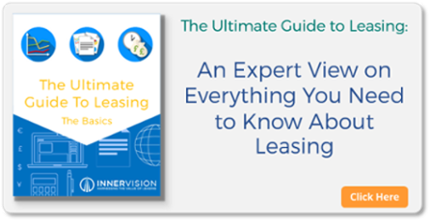Lessees and Lessors: The Perfect Leasing Relationship
Updated 30th May 2023 | 4 min read Published 12th February 2015

With Valentine’s Day just around the corner, we thought we’d take a look at the most important relationship within leasing – the bond between a lessee and a lessor.
Much like Romeo and Juliet, lessees and lessors are on separate sides of a lease agreement, but unlike the star crossed lovers, this relationship does not have to end in tragedy. The lessee (i.e. you) is the company that has a requirement for the equipment. The lessor is the company that is willing to finance it – as long as you pay them back. Provided both parties understand what is required of them under a lease agreement, this symbiotic relationship has historically been successful and allowed businesses access to equipment without a surge in cash outflow or any issues with technical obsolescence.
So what exactly is expected from lessors and lessees to help this relationship blossom into a long-term commitment?
The Lessor
The lessor is the company supplying the finance for the equipment being leased. It is the lessor who maintains ownership regardless of lease type and they have very few obligations under the lease, other than to provide you with the right to use the equipment without any interference.
Just like dating, there are good and bad lessors and before you enter into a long-term contract with one, you need to know that they are best suited to your operational and financial requirements. Some lessors specialise in specific equipment, others deal more generally with all asset types and lease structures.
Lessors come in many guises; banks or subsidiaries of banks, others are linked to or part of equipment suppliers and there are also a plethora of independent leasing companies specialising in particular market sectors (for example IT or Healthcare).
Leasing has historically been driven by local tax and local legislative rules and has therefore been “localised” within each country or region, however as business has “globalised” so too have some lessors and it is now possible and realistic to contemplate global lease arrangements with certain lessors.
With so many fish in the sea available for lessees, it is important to keep a clear head and do some research before falling head over heels for the wrong lessor. Many lessees have suffered more than a broken heart when negotiating with an unforgiving lessor, costing them dearly with restrictive terms or complex clauses. However, with the right lessor, companies are able to flourish through competitive lease rates and well negotiated terms and have a mutually beneficial relationship that leads to a long lasting love.
The Lessee
As the lessee, your payments allow you the right to use the equipment under lease for your business, provided you stick to the guidelines and regulations included in the lease agreement. As the lessor owns the equipment, the lessee is effectively borrowing someone else’s equipment, so you are responsible for the following – although some of these features will vary depending on the type of lease:-
- Keeping the equipment in an acceptable condition
- Using it only for the purpose that it was designed for
- Organising end of lease arrangements
- Making sure the lessor is aware of its location at all times
- Paying the rentals on time and;
- Any other tasks agreed in the lease documentation
In most situations, it is the lessee’s responsibility to choose the correct asset to meet the business needs. Lessors will rarely take responsibility for the suitability of the asset or whether it works - it is down to the lessee to plan for the different requirements your operational users may need.
Whether IT technology that needs regular updating, machinery that may be prone to damages or storage containers that need to be transported globally, it is the lessee’s responsibility to negotiate the required clauses as part of the agreement.
The perfect lease, like the perfect relationship, is about finding the right balance between what you as a lessee would like to include and what realistically can be achieved. While you may ideally prefer to be able to end your finance lease whenever you’d like with no early termination fees, realistically, this may raise the lease rate. Once you have a common understanding that a lease is an agreement between you both, not a competition, then you are on track to getting the best lease.
If you are looking for the perfect leasing relationship for your lease portfolio, you may wish to talk to Innervision. Like Cupid’s bow, Innervision has its own specialised leasing software and expert consultancy, which has already helped many lessees manage their lease agreements, allowing them to keep in control of their contractual obligations and attain the best lease terms for their operational requirements.
For more advice on picking the right lessor, be sure to check out our other blogs:
- What do Lessors Look For in a Lessee
- What to Look For When Deciding on the Right Lessor
- The 5 Lousy Lessors to Avoid
- The Different Types of Lessors Available to Lessees
This is an edited extract from our 50+ page introductory guide to leasing and lease portfolio management. Download your full guide for free by clicking here.
Share this Blog?




